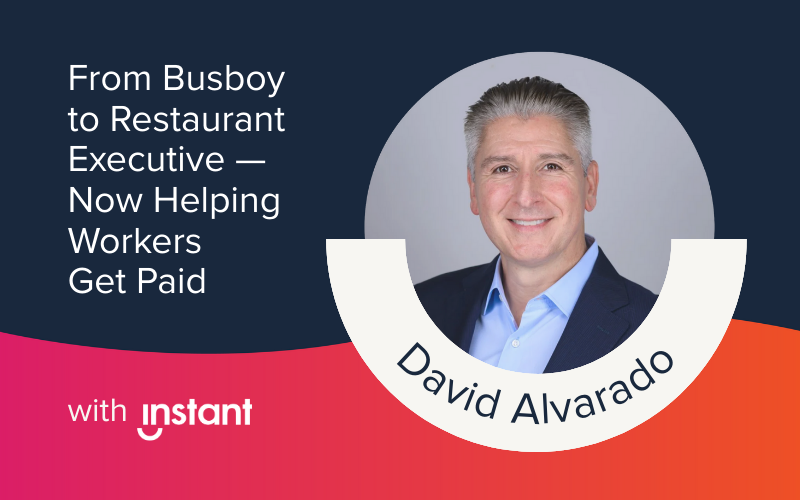By Ryan Ashton
The modern workforce is upon us, but this means different things for different professionals. For payroll operators, it’s adapting employee pay strategies to meet the changing expectations of staff. Employees may still expect to receive their pay in the form of a regular salary or wages, but when and how they want to access their pay is shifting dramatically.
Traditionally, an employee will receive pay through paper checks to be deposited into a bank account or via direct bank deposits–these are time-consuming, impersonal, and – frankly – dated processes. What’s more, paydays have historically operated on a monthly, bi-weekly, or weekly cadence. However, the evolution of technology and changing worker preferences have opened today’s workforce to a range of pay options. Leading the charge for a new modern way of getting paid out are digital wallets, with 53% of consumers saying they use digital wallets more often than traditional payment methods. However, despite high acceptance by workers, even digital wallets have seen slow adoption by organizations.
Ushering in a new era of payroll operations is crucial in meeting the needs of increasingly diverse workers. This is where the concept of pay optionality enters the equation.
Pay Optionality Transforming the Payroll Industry
Pay optionality is a multifaceted approach that refers to the flexibility or choices available to employees regarding where, when, and how they receive compensation. We all live differently with various responsibilities, so why should all workers get paid the same way? Getting paid on a weekly, bi-weekly, or monthly basis is a concept workers have historically been accustomed to, but it’s not the only option. Offering employees greater flexibility and ownership in how they get paid can open doors for workers and enhance organizational health.
Benefits of Pay Optionality to Employees
One unexpected bill, a dead car battery, or an emergency childcare cost could be a breaking point for an employee. In fact, 60% of U.S. employees live paycheck to paycheck. We don’t always know the personal lives of others, and we can’t assume where people stand with their finances. Granting employees access to their hard-earned money can reduce financial stress, whether for regular or unforeseen expenses–more on how this can significantly impact a company below.
On the other hand, an estimated 4.5% of U.S. households–approximately 5.9 million people–were “unbanked” in 2021 because of distrust in financial institutions or because they didn’t meet minimum balance requirements. Options for payroll that include operating independently from traditional banks can open up financial opportunities for a broader segment of the workforce that may be unbanked or underbanked.
Benefits of Pay Optionality to an Organization’s Bottom Line
When employees are happy, companies thrive. That’s why the benefits of pay optionality can have rippling effects on payroll operations, and ultimately an organization’s overall health.
- Beating out the job market competition: 79% of Americans would be more interested in applying for a job that pays them the same day they work. More workers are not only learning about pay optionality but demanding it as well.
- Increasing employee satisfaction and retention: 56% of working Americans would stay a month to a year longer at a job if they could get immediate access to their wages without fees. Pay optionality can help leaders put a stop to the revolving door of staff.
- Enhancing customer experiences: 88% of leaders found that by offering earned wage access (EWA), a component of pay optionality, employees experienced less stress and their mental health improved. Employees with the mental clarity to be dedicated to their craft are more likely to take greater accountability in improving customer service.
- Saving money: In a study we conducted with long-time client Ultra Steak, we found that they reduced the costs associated with weekly cash pickups by 50% through EWA. There are often hard costs associated with traditional payout methods that pay optionality can reduce.
3 Key Components of Pay Optionality
Achieving true pay optionality isn’t a process to be completed overnight. There are several pay options available for employers to consider to build a program that fits organizational and staff needs. The three components organizations should consider when building toward pay optionality include:
- Earned wage access grants employees the ability to access a portion of their earned wages when they need it, typically right after they finish their day of work.
- Electronic tips give employees the ability to receive tips electronically to ease how they get access to their hard-earned tips, while also ensuring a more transparent and secure process.
- Electronic Pay allows employers to pay employees their entire wages, at a cycle that they define, all instantly and without fees.
The key components of pay optionality fit right in with the theme of the upcoming Payroll Congress 2024 event: pay transformation. We’re in a time of big change when recognition, learning, and collaboration within the payroll community are a must. Visit the Instant booth at Paycon as we highlight the importance of pay optionality and the accuracy, efficiency, and compliance in managing one of the most critical aspects of employee compensation.
Also, when you’re ready to embrace the modern workforce, download our Earned Wage Access Buyer’s guide.


